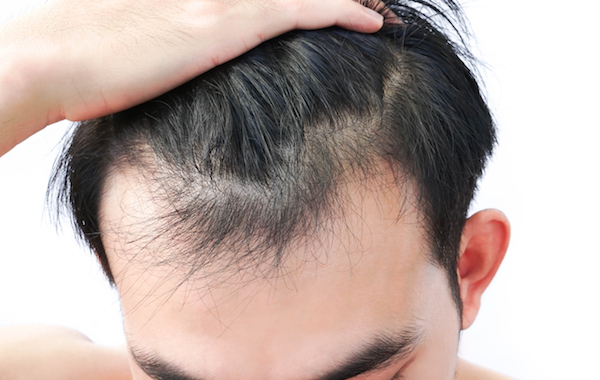
Hair Loss
Did you know that an average scalp contains about 100,000 hairs? Losing approximately 100 hair per day is considered normal but it is replaced by new hair growth. Baldness or hair thinning happens when the lost hair fails to grow back.
The fact lies that both men and women tend to lose the amount and thickness of hair as they grow older.
Baldness is related to heredity, aging, and action of male hormones (Testosterone) on hair roots. Baldness is more common and severe in men than women simply due to higher levels of testosterone. Hair loss generally develops slowly over the years or could be sudden in onset in few.

Hair Loss
Did you know that an average scalp contains about 100,000 hairs? Losing approximately 100 hair per day is considered normal but it is replaced by new hair growth. Baldness or hair thinning happens when the lost hair fails to grow back.
The fact lies that both men and women tend to lose the amount and thickness of hair as they grow older.
Baldness is related to heredity, aging, and action of male hormones (Testosterone) on hair roots. Baldness is more common and severe in men than women simply due to higher levels of testosterone. Hair loss generally develops slowly over the years or could be sudden in onset in few.
Male Pattern Hair Loss (MPHL)
Female Pattern Hair Loss (FPHL)
Alopecia Areata (AA)
Male pattern hair loss (androgenetic alopecia) is the commonest cause of hair loss in men.
In males, it usually starts in either temple or crown area and gradually progresses to the classic bald pate. Patients may notice hair shedding, poor hair quality, hair thinning or bald areas.
Testosterone (Androgen) in converted to DHT by the action of 5 alpha reductase enzyme present at the hair roots. DHT acts on hair roots and reduces its capacity to regrow thus leading to gradual hair thinning and finally baldness.
This condition is characterized by patchy round bald patches appearing suddenly, most often affecting the scalp. However, alopecia areata may affect any hair-bearing areas of the body. In rare cases, alopecia areata can cause more extensive hair loss on the head, face and body. The impact on a person’s appearance can cause significant emotional stress.
It affects any age group, including children. Alopecia areata is a type of autoimmune disorder, meaning that your own immune system is mistakenly attacking the hair follicles for unknown reasons.
- Fungal infection (ringworm) of the scalp: This presents as pus filled boggy swelling on scalp. It is highly contagious and is very common in children. It requires oral treatment and without effective treatment, it can cause permanent balding in the affected area.
- Trichotillomania: In this condition, the person tends to repeatedly pull out his own hair. Patients often feel a sense of urgency to pull out their hair on their scalp, eyelashes, nose hairs, or eyebrows.
- Scarring alopecia- In this rare type of hair loss the roots get completely destroyed by underlying disease activity resulting in permanent hair loss in affected areas. There are numerous causes for scarring alopecia, such as Folliculitis decalvans, chronic cutaneous lupus, lichen planopilaris and frontal fibrosing alopecia.
Our Dermatologists & Trichologists Dr Vijay Adhe and Dr Pinanky Adhe are experts in managing hair related disorders.
Detailed history, Lifestyle & Dietary habits are noted down. After thorough scalp analysis, trichoscopy and necessary blood investigations our treatment plans are formulated.
It consists of home therapy with cyclical nutrition and topical solutions. Diet improvement is integral part of hair loss treatment. Treatment plan also consist of non-surgical therapies to regrow new hair such as
LLLT- low-level laser treatment is US FDA approved hair regrowth therapy. it has been shown to be safe and effective in improving hair thickness and stopping hair fall.
Micro-needling – Medical Skin Needling is aimed at stimulating hair roots to promote new hair growth.
Mesotherapy is a medical technique where special hair regrowth cocktail solutions containing amino acids, growth factors and vitamins are used.
ADVANCED GFC THERAPY – Read More
Intralesional therapy for alopecia areata – micro-injections are given at the site of hair loss to stop immune cells from damaging hair roots thus helping hair to regrow faster.
Success Results

